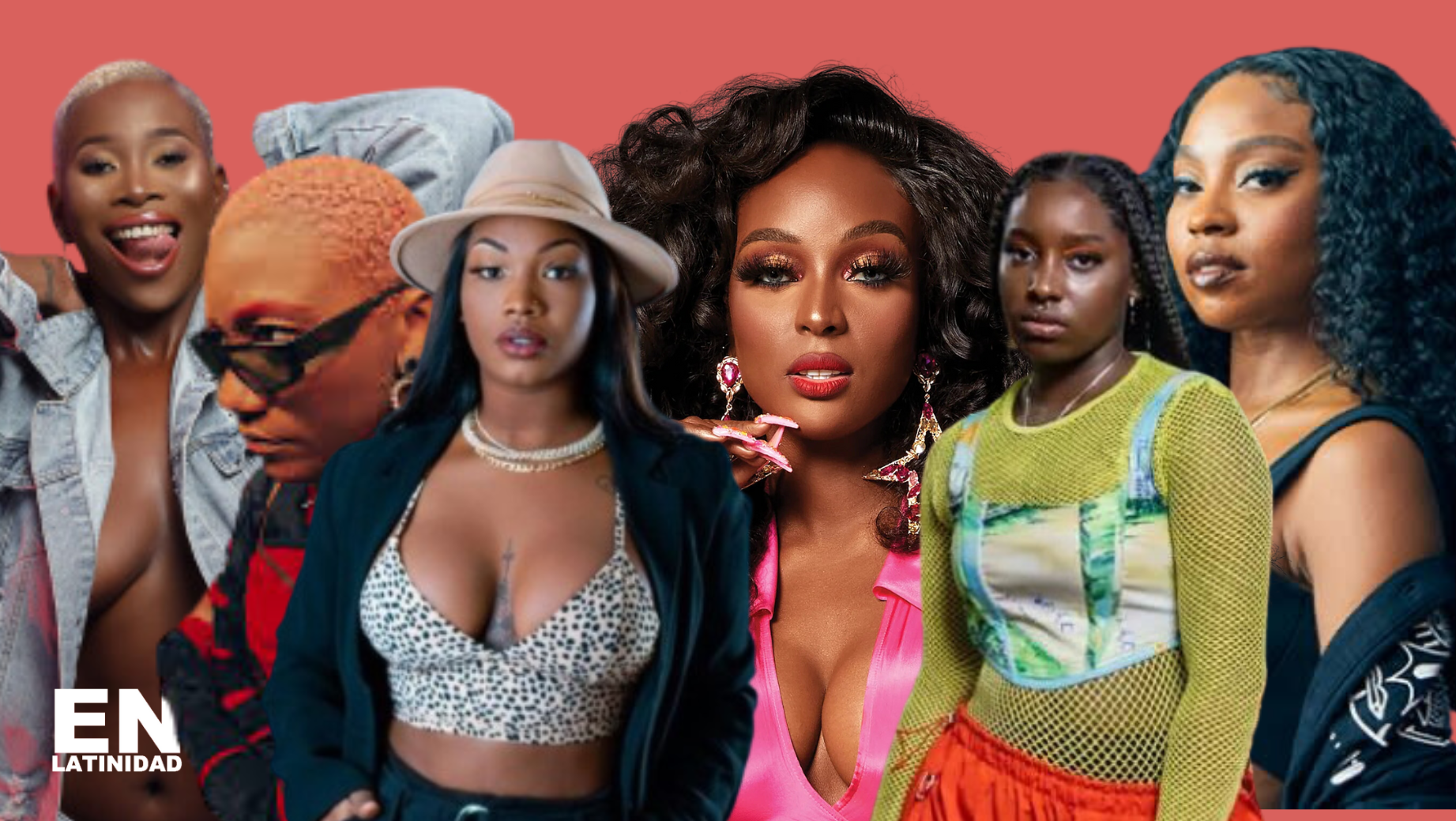Boss Ladies of Beat: The Black Women Behind ‘El Movimiento’ in Latin Music
You know, Latin America has more Black people than the U.S., pero try finding that reflected anywhere — desde la política hasta la música. For real, Black representation gets slept on at every level, including the very sounds we claim as nuestra cultura. Music genres like reggaetón, salsa, merengue, bachata, even Afro-Colombian hip-hop? All deeply rooted in Black rhythms and traditions, yet the mujeres behind the mic, the ones pioneering and inspiring, rarely get the shine they deserve.
Latin America is home to one of the largest populations of people of African descent in the world — far larger than that of the United States. Yet, despite this demographic reality, Black representation across social, economic, and cultural spheres often remains limited. Music, one of Latin America’s most influential cultural exports, is no exception. Many of the genres now synonymous with Latin identity — reggaetón, salsa, merengue, bachata, and Afro-Colombian hip-hop — are deeply rooted in Black cultural practices, rhythms, and histories. Yet, the contributions of Black women, in particular, have frequently been overlooked or marginalized in mainstream narratives.
Black women in Latin Urbano have long been pioneers, shaping the sound, style, and cultural resonance of the genres they inhabit. They challenge both racial and gendered norms while creating pathways for future generations of artists. Their work embodies resistance, joy, and innovation — often simultaneously. While male counterparts are frequently celebrated for similar achievements, Black women in Latin Urbano fight for visibility on multiple fronts: in music, on stage, in media representation, and within the structures of the music industry itself.
One artist who has broken significant ground is J Noa, a rising talent whose work is rooted in both traditional and contemporary Latin rhythms. By bringing her voice and perspective to the forefront, J Noa exemplifies how Black women continue to redefine musical boundaries in Latin Urbano. Her artistry reflects not only technical skill but also a deep understanding of the cultural legacies from which she emerges, offering narratives that celebrate Afro-Latin identity while challenging existing power structures.
Amara La Negra is perhaps one of the most well-known pioneers in terms of Spanish-language representation. As a Dominican-American singer, dancer, and media personality, she has long fought for recognition in spaces that often marginalize Afro-Latin women. Amara’s visibility on television and music platforms has opened doors for countless women behind her, inspiring a new generation of Afro-Latin artists to claim their space in mainstream Latin music. Beyond her music, she embodies the intersection of race, gender, and cultural pride, challenging beauty standards and societal expectations at every turn.
In the Dominican Republic, Gailen La Moyeta has emerged as a force in the urbano scene after winning Musicólogo’s Tan de Naranja rap challenge. Her rise demonstrates the vitality and competitiveness of the Dominican rap scene and highlights how Black women are claiming spaces traditionally dominated by men. Gailen’s success is emblematic of broader shifts in Latin Urbano, where skill, authenticity, and creativity are increasingly breaking through barriers of underrepresentation, even in countries where Black identity is a major part of the population.
Goyo, the breakout star of ChocQuibtown, represents another vital thread in the tapestry of Black women in Latin music. As part of one of Colombia’s most influential groups, she has helped bring Afro-Colombian sounds to international audiences, blending hip-hop, funk, and traditional Colombian rhythms. Goyo’s artistry is deeply intertwined with cultural advocacy, celebrating Afro-Colombian heritage while opening doors for women and girls in a male-dominated music industry. Her visibility proves that Black women can simultaneously honor tradition and innovate modern sounds.
Another exciting figure in the Latin alternative scene is Mabiland, a queer Colombian artist whose experimental music challenges genre boundaries while celebrating Afro-Latin identity. Mabiland’s presence in the scene is significant not only for her artistry but also for how she disrupts conventional narratives about gender, sexuality, and race in Latin music. By embracing queerness and alternative sounds, she expands the possibilities of Latin Urbano and inspires other marginalized artists to pursue their authentic visions.
Finally, La Chocolatosa, a Dominican rapper and choreographer, has built a career that bridges performance, music, and cultural expression. Notorious for her collaborations with the late gay pioneer La Delfi, El Alfa, and Tokischa, La Chocolatosa has been a visible and influential figure in Dominican urbano for years. Beyond supporting other artists, she has cultivated her own music career, blending rhythm, movement, and storytelling in ways that reflect her unique positionality as a Black woman in Latin music.
Across these examples, it becomes clear that Black women in Latin Urbano are not just participants — they are innovators, leaders, and cultural archivists. Their influence can be felt in beats, lyrics, choreography, and fashion, even when mainstream recognition falls short. By celebrating these artists and acknowledging the historical and social contexts in which they operate, we can begin to correct the systemic underrepresentation of Black women in Latin music and appreciate the full depth of their contributions.
From pioneering Spanish-language representation to disrupting traditional genre norms, Black women in Latin Urbano have continuously shaped the soundscape of Latin America and the global Latin music diaspora. Their work challenges audiences to rethink assumptions about race, gender, and cultural authority while inspiring the next generation of Afro-Latin talent to claim their space in the industry — boldly, unapologetically, and creatively.





Leave a Reply
You must be logged in to post a comment.